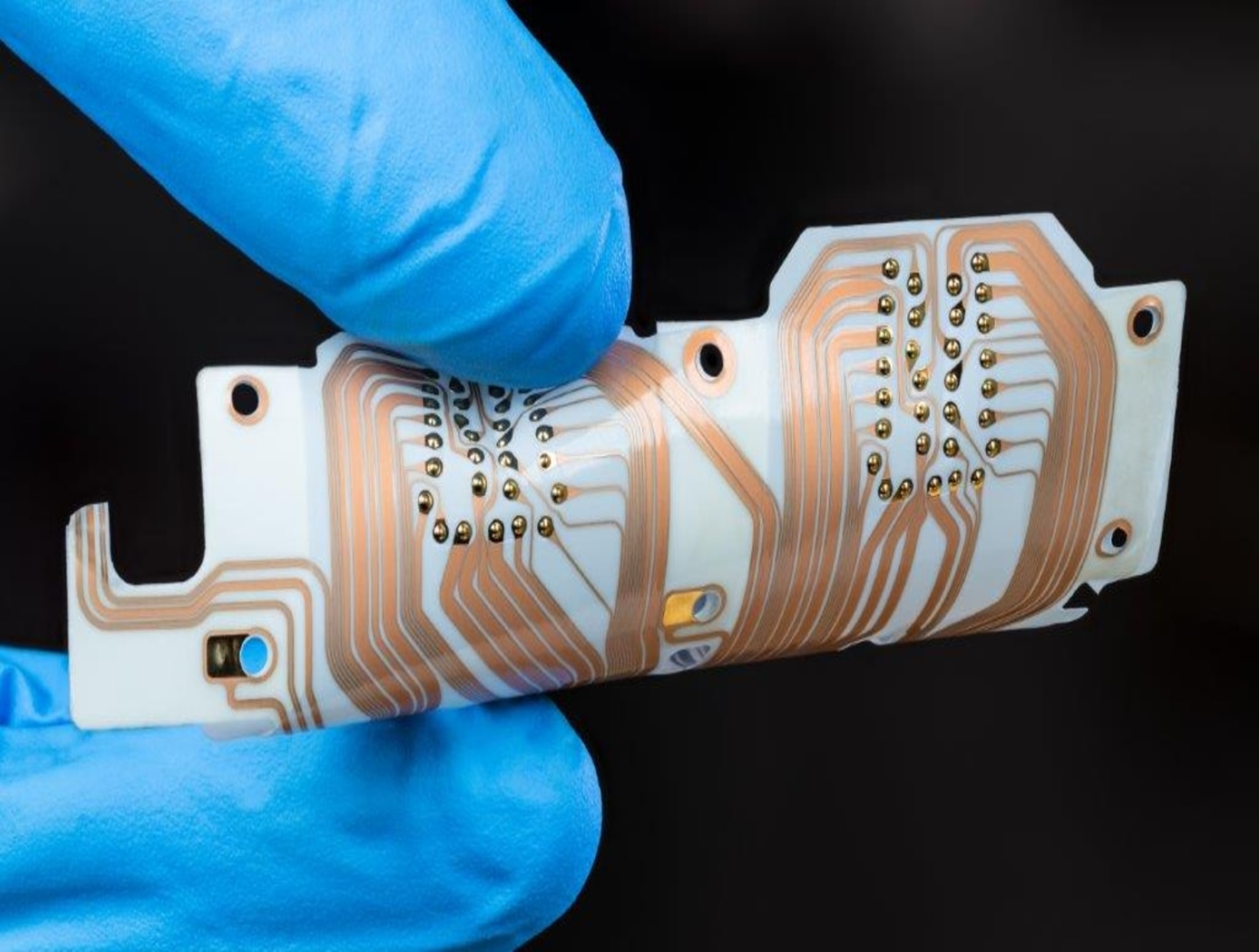Search
Sensors

Capacitive Impedance Water Ice Sensor (CIWIS)
The CIWIS is configured to detect ice, water, and other material accretion on an aircraft's surface using a capacitive sensor comprised of metal traces on a printed circuit board (PCB) with a dielectric surface covering. The traces are on the bottom side of the PCB for protection from the elements experienced on the top side. It drives the sensor with a sinusoidal signal and monitors the sensed sinusoidal signal from the sensor. By electronically measuring the RMS voltage of both the drive and sensed signal as well as the phase shift introduced by the sensor, the CIWIS can determine the impedance of the sensor and any material deposition. When a material is present on the surface, this introduces another capacitor in parallel with the air and PCB, with that material being another dielectric.
Water and ice exhibit frequency-dependent permittivity that introduces a phase shift unlike that of a typical capacitor. CIWIS leverages these differences, distinguishing materials by the unique RMS levels and phase shifts they produce in the sensor. For ice, this effect occurs at approximately 10 kHz.
While NASA originally developed the CIWIS to detect ice on aircraft, it may also be useful to sense the presence of water and other contaminants in pharmaceutical production; condensation in heating, ventilation, and air conditioning (HVAC) systems; and ice accumulation on cryogenic equipment. This technology is available for patent licensing, and is rated at a Technology Readiness Level or TRL of 5 , meaning it has been developed and validated in an industrially relevant environment and is ready for a prototype demonstration.
electrical and electronics

Printable IoT sensor development platform
Advances in additive manufacturing have enabled development of printable electronic sensor elements that can be deposited onto flexible substrates. To benchmark performance of printed sensors against the state of the art, NASA developed a low power flexible sensor platform. The platform integrates the following key components and features:
-Flexible substrate: DuPont Kapton allows bending around cylindrical surfaces as small as in diameter.
-Embedded microcontroller: Cypress CY8C4248 LQI-BL583 Arm Cortex M0 processor with BLE wireless controller, max frequency 48 MHz. Supports low power modes of operation, capacitive sensing support, and a single-channel 12-bit AD converter.
-Commercial sensor suite: Bosch BNO080 inertial sensor; Bosch BME280 humidity, pressure, and temperature sensor; AMS CCS811 air quality sensor (VOCs and CO2).
-Prototyping area for custom-printed sensors: 1) thermistor, uses carbon-based PTC resistor paste DuPont2792; 2) capacitive humidity sensor using a NASA-developed dielectric ink.
NASA researchers have used the platform to study performance of the printed capacitive humidity sensor. The 2x4 mm co-doped barium titanate sensing element is highly sensitive to water vapor and performs as an unobtrusive breathing monitor, sensitive to breath at distances of up to 20 cm. Average change of sensor capacitance at a distance of 7.5 cm was observed to be 6.23.5 pF.



